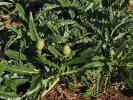H2020 DISARM Project: Dissemination of innovative solutions for the management of antibiotic resistance
- Type Project
- Status Filled
- Execution 2019 -2022
- Assigned Budget 1.999.580,00 €
- Scope Europeo
- Main source of financing Horizon 2020
- Project website DISARM
The overuse of antibiotics in human medicine and livestock farming causes pathogenic bacteria to develop resistance to different antibiotics, which reduces options for effective treatment of infections. An important goal is to introduce the practice of safe antibiotic use in livestock farming to maintain their effectiveness.
The EU-funded DISARM project seeks to create a network to help the European livestock industry reduce the need for and use of antibiotics by improving animal health and disease management. The project will accelerate the exchange of knowledge, best practices, and innovations to accelerate the livestock industry's transition to a model focused on prevention, biosecurity, and limited antibiotic use.
The DISARM (Diffusion of Innovative Solutions for Antibiotic Resistance Management) thematic network focuses on disseminating best practices from innovative farms and research on how to reduce antibiotic resistance in livestock farming. Managing antibiotic resistance is not only important for agriculture but can also reduce the effectiveness of antibiotics in treating humans. Addressing antibiotic resistance is a major strategic challenge for European livestock farmers, an industry valued at over €145 billion. Evidence shows that rates of antibiotic use and resistance vary widely from farm to farm, and that adopting appropriate innovative farm management practices can reduce both antibiotic use and the development of resistance. Disseminating these effective management practices is at the heart of the DISARM project, which will work with farmers, veterinarians, advisors, industry, and researchers to identify and widely disseminate the most cost-effective and beneficial strategies.
This will be achieved by:
- Develop a 600-member multi-stakeholder community of practice to share, discuss, and disseminate the most promising strategies for reducing antibiotic resistance in livestock.
- Produce 10 best practice guides, supported by 100 best practice summaries and 100 short videos to explain how farms have successfully adopted innovative practices to reduce antibiotic resistance.
- Working with 40 farms (in 8 countries) to develop multi-stakeholder farm health plans, with at least 30 of them in use. These plans are used as case studies to show other farms how working with their veterinarians, feed or equipment suppliers, and advisory services can help them adopt a set of best practices appropriate for their farm.
- Conduct 80 events to disseminate best practices, organized by farmers or research centers or by DISARM grantees, but resulting from intensive collaboration between a DISARM grantee and livestock industry stakeholders, and speak at an additional 60 industry events.
- Submit three annual reports on the remaining challenges with antibiotic resistance that research or policy development must address.
- EIGEN VERMOGEN VAN HET INSTITUUT VOOR LANDBOUW- EN VISSERIJONDERZOEK (EV ILVO)







